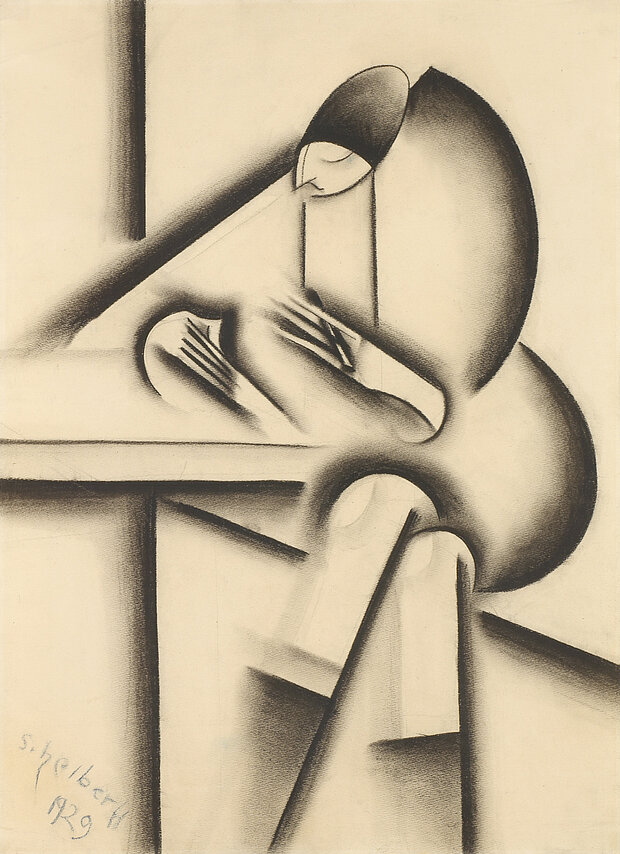
Scheiber, Hugó
Geometrische Figur
1929

© mumok
| Object description | Charcoal on paper |
|---|---|
| Dimensions |
Objektmaß:
height: 60 cm,
width: 43 cm
|
| Year of acquisition | 1993 |
| Inventory number | G 790/0 |
| Creditline | mumok - Museum moderner Kunst Stiftung Ludwig Wien, ehemals Sammlung Paul Kövesdi, New York |
| Rights reference | Gemeinfrei | public domain |
| Further information about the person | Scheiber, Hugó [GND] |
Though Hungarian artist Hugó Scheiber is one of the early protagonists of modernity, he is almost unknown to today’s public. If one initiates an internet search for him, the results are mostly to do with art dealers and with mentions of the fakes of his pictures that are in circulation. Why the artist remains apparently unrepresented in the large museum collections in Europe and America is an open question. Scheiber was born in Budapest in 1873, the year in which the great World Exhibition took place in Vienna. His family later moved to Vienna and his father worked as a set painter in Vienna’s Prater, the city’s famous amusement park. Scheiber attended the School of applied arts in Budapest, in 1919 he had an exhibition with Béla Kádár in Vienna and in 1926 his pictures were even shown in the exhibition “Société Anonyme” [Anonymous Company], in New York. In Vienna during the 1920s he was mainly concerned with portraits, life in the capital and the world of cabaret. His work, which is strongly influenced by Art Deco (and became increasingly decorative), transmits the dynamics of the mystical ‘Roaring Twenties’ but lacks any social criticism. The “Geometric Figure” from the mumok collection shows the whole elegance of Art Deco using a reduced Cubist formal language. Figure and space are assembled from the same simple, shaded forms. Closer observation reveals that the depiction is less abstract and more nuanced: a person sitting at a table with crossed legs, possibly reading. There is a cigarette holder in a long-fingered, elegant hand. The voluminous clothing is, perhaps, a fur; the head covering might well be one of those simple, head-hugging hats that were so fashionable in the 1920s. The whole composition gives the impression of an elegant lady in a café, a public place. A woman alone in a café was something that had not yet become commonplace. Her legs, to which the artist has given such prominence, give the impression they are trousered, even more unusual for a woman in 1929.
© mumok – museum moderner kunst stiftung ludwig wien